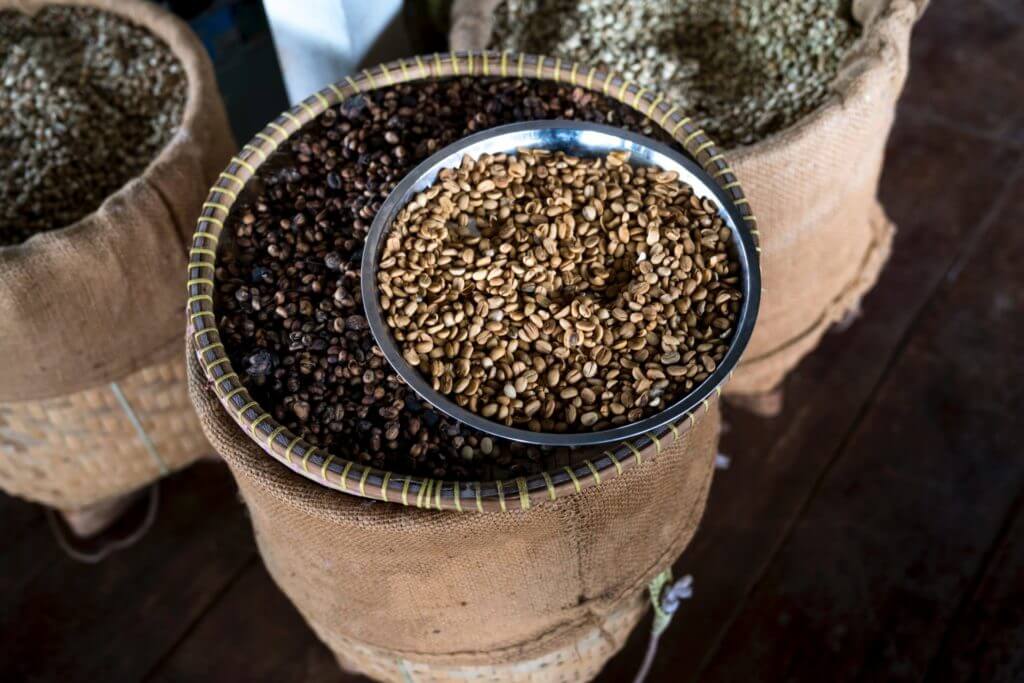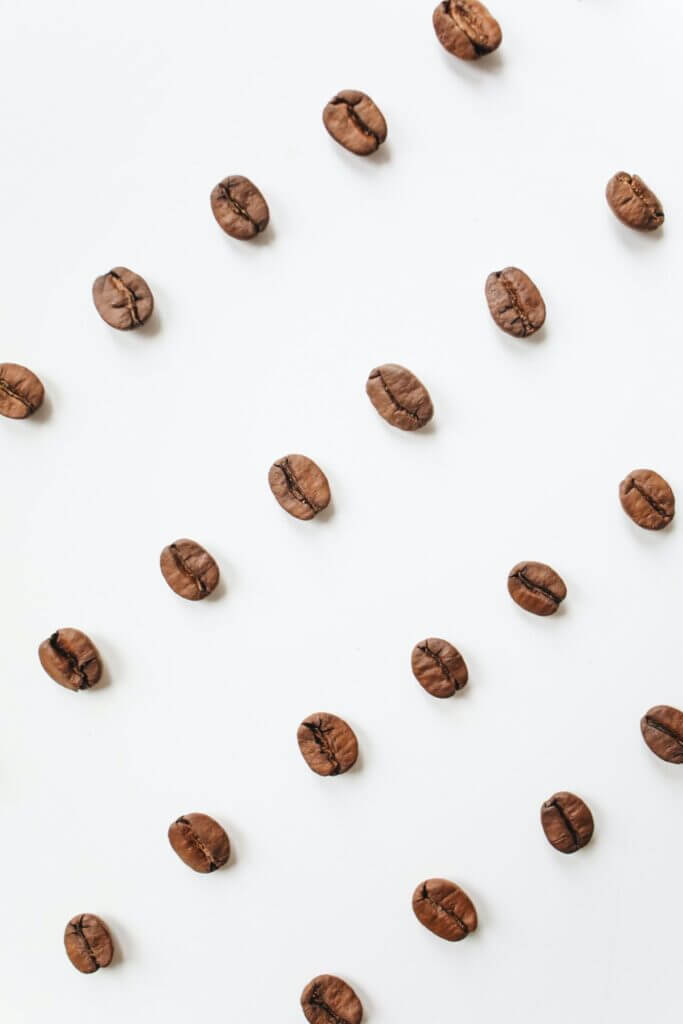A short guide that gives you enough knowledge to purchase coffee intelligently.
Table of Contents
- About Roast
- What are the types of coffee beans?
- How does the coffee process affect coffee?
- How does altitude affect coffee?
- What are the other common mistakes or misbeliefs?
Estimated reading time: 4 minutes

About Roast
The darker the roast
- The more bitter it gets.
- The less sour it becomes.
- The more oily it becomes and thicker the coffee.
- The more astringent may appear.
- The less flowery and fruity profiles are expressed.
Medium roasts stand right in between. Scientifically, it retains the most aromatic profiles and offers the best balance between acidity and bitterness.
However, it can have a pleasant acidity which some users may not be used to.
In most parts of the world, 70% of casual drinkers prefer the darker roast, largely due to cultural and habitual preference.
The older the person, the higher the chance to prefer a stronger coffee as the tongue’s sensitivity reduces.
If you are running an F&B business or serving many people, it’s safer to serve a darker roast. A medium roast can be considered if you are serving discerning people with an acquired taste.
Common mistakes
- There is a difference between pleasant bitterness and astringent.
It’s perfectly alright for coffee to be bitter, and one should not dismiss a coffee as inferior by detecting any level of bitterness.
Astringents are what we will want to avoid and usually appear at the end of the tasting. - Some users mistake intensity or the level of bitterness as an indicator of aroma.
Theoretically, there’s nothing wrong with that, but bitterness should be part of the flavour profile, not perceived as the main vessel.

What are the types of coffee beans?
We will focus on the two main types of coffee used, Arabica and Robusta.
Arabica Coffee
- Has more aromatic profiles.
- They are graded according to their quality which can vary greatly.
- Are usually used in speciality coffee and can be drunk as a single origin
- Has a higher level of acidity as the coffee is usually roasted lighter to preserve the aromatic profiles.
- They are harder to grow, as they are more susceptible to infestation and grow better at higher altitudes.
- The higher the altitude, the slower is the growth and the better is the aromatic profile.
- Has lower caffeine.
- Has a higher chance of defective rate from frost, insects and weather conditions which degrades the coffee quality heavily.
Robusta Coffee
- Often garner a less favourable reputation due to their perceived bitterness and lesser flavour profiles.
- However, Robusta can be cultivated, processed, and priced on par with the finest Arabica beans.
- It is very difficult to find respectable Robusta estates, so most Robusta are of poorer quality.
- They are broadly used for their bold flavours and thicker body.
- They are more forgiving to extract for making espressos.
- They are hardy plants that grow well by themselves.
- They are less toxic as they generally do not require more herbicide or pesticide due to the high caffeine content which keep insects at bay.
- Has high chlorogenic acid, which is mainly responsible for the antioxidant activities. Decaffeination does not reduce the amount of chlorogenic acid.
- Has higher caffeine content.
Robusta in general has a negative profile, but what many don’t know is good Robusta can taste smoother than bad-quality Arabicas. The use of good Robusta could elevate a bolder espresso profile and increasing the body.
Arcaffe and Le Piantagioni use a range of rare grade A and AB Robustas treated in the same way as prized Arabicas. The result is having bold coffee with pleasant bitterness yet mellow, rich in body and less acidic.
Common mistakes
- Pure Arabica coffee is not a sure sign of quality as defects could degrade the coffee remarkably.
- Not all Robusta are bad, specialty Robusta beans are processed in the same way as Arabicas which could greatly elevate the profile of a coffee without much astringents.
How does the coffee process affect coffee?
We will focus on the two main types of process, Natural and Washed
Natural process
- Has a thicker body
- Reduced acidity
- Higher complexity of flavors
Washed process
- Higher acidity
- Weaker body
- Cleaner clarity of notes
- Brighter note
- Smoother
The Natural process, also known as the dry process, requires careful management. Over-fermentation or mould growth, can negatively impact the flavor of the coffee. The quality of the coffee processed by the natural method can be quite variable, ranging from very low to very high. It involves drying the coffee with its pulp and skin for months before removing the exterior to extract the coffee beans.
High-quality coffee produced by the Natural process possesses a sweet, full-bodied, and often fruity or wine-like flavour. It’s usually done in places with less potable water.
Washed method, also known as the wet method, removes the pulp and the skin before sending for fermentation. They are then washed to remove the mucilage before drying. It produces a clean, bright, and complex cup of coffee. The steps are more controllable and forgiving but require a significant amount of water and labor, leading to a higher cost.
How does altitude affect coffee?
The higher the beans grow, the less oxygen in the air and less insects would appear.
The plant would develop with less caffeine to keep insects away. The environment also helps the coffee to develop better in size, density and aroma.
What are the other common mistakes or misbeliefs?
Judging your espresso visually,
Many users judge the quality of the coffee from the amount of crema. Lighter roast coffee should not have thick crema due to its lesser amount of oil.
The traditional Crema tests done for espressos were invented when dark roasts were the main streams. Lighter roast espresso should be enjoyed as what it is.
Antioxidant effect

Although Arabicas are priced higher. Robusta has a much higher level of chlorogenic acid which is the main driver for antioxidant activities.
A splash of milk could reduce the effect of antioxidants by 50% and nearly 95% when made into a latte-style beverage.
Buying counterfeit coffee
Paying a premium does not guarantee that the coffee is good. Neither is getting a 100% Arabica blend.
Counterfeit coffee is rampant in the industry, and most roasters or coffee traders know that most consumers are not trained to tell the difference.
Misrepresenting the origin or adulterating with cheaper species is very common. They are often mixed with coffees that are poorly farmed and grown in low land with the help of a heavy dose of pesticide and herbicide. The coffee could be full of defects or mouldy that can’t be easily detected after roasting.
Premium coffees should have a certification or could name the specific coffee estate with the name of the estate’s owner and other details to confirm their relationship. Consumers can contact the owners of the estates to confirm the business relationship.
Coffee is taxing to the kidneys and other organs,
New research shows that those drinking two or more cups experienced an 18% decrease in risk for kidney disease development.
As for patients who already have kidney diseases, coffee drinkers lessen the risk of further development to end-stage kidney diseases, requiring dialysis treatment by 18%.
The research additionally indicates that individuals who consume coffee have a 28% lower risk of mortality from Chronic Kidney Diseases (CKD) than non-coffee drinkers.
Although it’s inconclusive and requires further investigation, the findings in the meta-analysis suggest that coffee has a protective effect on the kidney rather than exerting damage. Similar indications were found on the liver and heart.
Hope you have learned how to buy coffee beans like an expert.
Now return to our online store and order our Forbes featured specialty coffee beans.